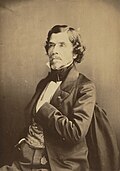Vaizdas:The Lion Hunt (Eugène Delacroix) - Nationalmuseum - 23399.tif

Rinkmenos TIF peržiūros JPG dydisː 783 × 600 taškų. Kitos 6 rezoliucijos: 314 × 240 taškų | 627 × 480 taškų | 1 003 × 768 taškų | 1 280 × 980 taškų | 2 560 × 1 960 taškų | 3 905 × 2 990 taškų.
Didesnės raiškos iliustracija (3 905 × 2 990 taškų, rinkmenos dydis: 33,42 MiB, MIME tipas: image/tiff)
Rinkmenos istorija
Paspauskite ant datos/laiko, kad pamatytumėte rinkmeną tokią, kokia ji buvo tuo metu.
| Data/Laikas | Miniatiūra | Matmenys | Naudotojas | Paaiškinimas | |
|---|---|---|---|---|---|
| dabartinis | 17:32, 7 spalio 2016 |  | 3 905 × 2 990 (33,42 MiB) | AndreCostaWMSE-bot | {{Artwork |other_fields_1 = |artist = {{Creator:Eugène Delacroix}} |title = {{en|The Lion Hunt}} {{sv|Lejonjakt}} |wikidata = Q18600240 |object_type = painting |description = {{en... |
Paveikslėlio naudojimas
Paveikslėlis yra naudojamas šiuose puslapiuose:
Visuotinis rinkmenos naudojimas
Ši rinkmena naudojama šiose viki svetainėse:
- Naudojama en.wikipedia.org
- Naudojama es.wikipedia.org
- Naudojama fa.wikipedia.org
- Naudojama fr.wikipedia.org
- Naudojama hr.wikipedia.org
- Naudojama mk.wikipedia.org
- Naudojama sv.wikipedia.org
- Naudojama www.wikidata.org






